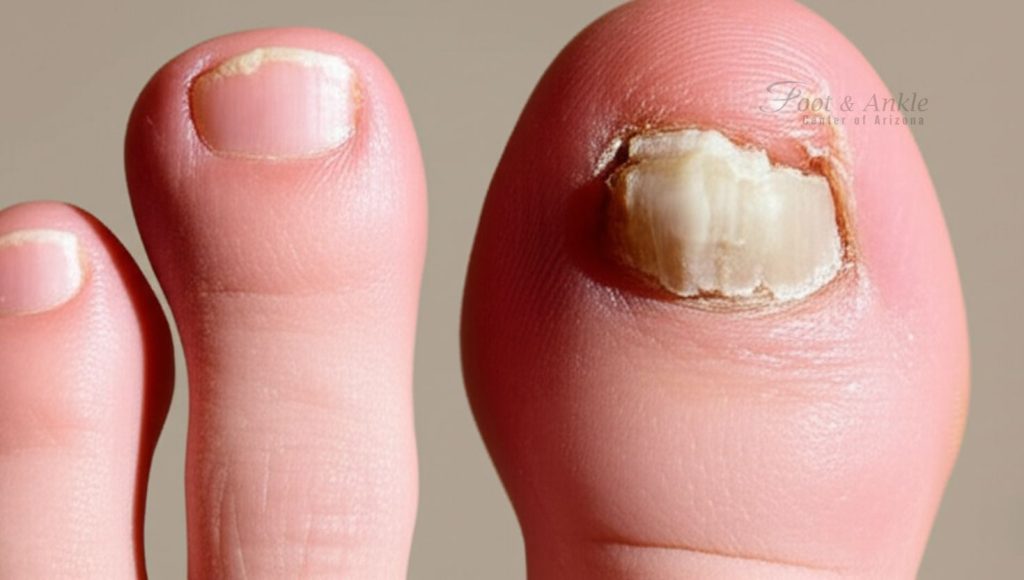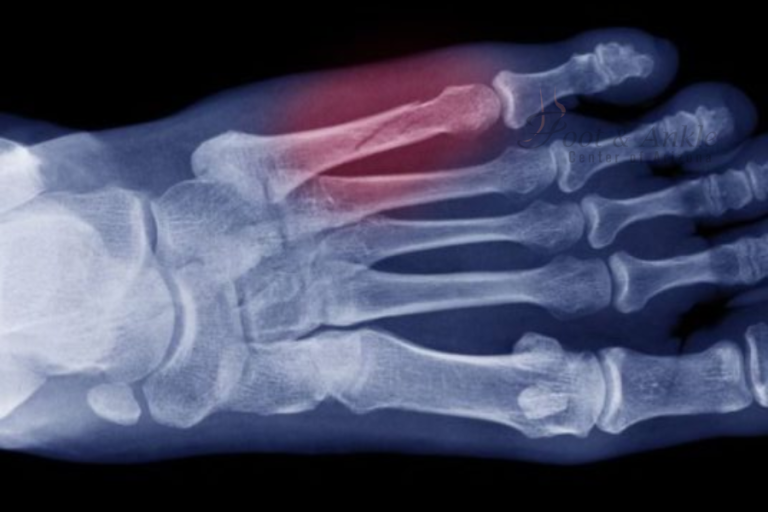Hammer toe is a well-known problem and troublemaker within complaints for many individuals, functionally disabling stress conditions of the foot. Proper management of the condition, including knowledge about the causes, symptoms, and treatment patterns, is very important. This paper is a discussion of different aspects of the hammertoe condition, including the types, causes, symptoms, diagnosis, and treatment together with the prevention measures that relieve the condition.
What Are Hammertoes?
Hammertoe is a foot condition where the toes are deformed in such that one or more of the joints are bent down like the shape of a hammer. It is very common along the second, third, and fourth toes. At the middle joint, the toe is usually contracted, thus causing the toe to be bent down, but occasionally, it will point upwards at the tip. This type of deformity causes pain and difficulty while wearing shoes or functionally affects the foot.
Variations on Hammertoes
There exist different variations of hammertoes. These can be categorized both by the location of the affected joint and by the extent of the deformity. Malleable Hammertoe: This is the premature point of hammertoe, and at this initial stage, the toe can still be bent. The cause of the presence is much more amiable, and the toe is still formed.
- Rigid Hammertoe: The toe will gradually become rigid if left without treatment and can no longer be straightened out. This advanced stage of the condition usually has a greater amount of pain and needs more aggressive treatment.
- Claw Toe: The problem involves the middle joint, as does hammertoes, but the joint nearest the toenail is also affected, causing both of these joints to curl downward.
- Mallet Toe: In this, the tip of the toe is bent downwards; the rest of the joints may remain normal.
Hammertoes Prevalence
Hammertoes represent a very common pathology, prevailing in a relevant percentage of the population. The prevalence is much higher in older patients and in those individuals who use shoes that are not suitable. According to some studies, hammer toes occur in about 2% to 3% of the general population, with a higher prevalence in females compared to males. The prevalence of this condition also increases with age and can be augmented by some types of shoes and even by heredity.
How to Recognize Hammertoe Symptoms
The recognition of hammertoe symptoms is essential for early intervention in its treatment. The symptoms include:
- Toe Deformity: The affected toe will, upon view, look bent or curling downwards. It resembles a hammer.
- Pain and discomfort: Pain may exist in the affected toe, more so when one is wearing their shoes. This pain in most cases is sharp or ache-like and at times may worsen on standing or walking for a long period.
- Corn or Callus Formation: Friction from the toe rubbing against the shoe may cause corns or calluses to develop on the top of the toe or ball of the foot.
- Redness and Swelling: There will be redness or swelling in the affected toe, indicating inflammation in that region.
Primary Causes of Hammertoes
A few of the reasons behind hammer toes may sometimes be:
Genetic Predisposition:
The family history of having foot deformations or conditions boosts the hammer toe acquisition risk.
Footwear Choices:
Wearing too tight, narrow shoes or shoes with a high heel portion will most likely result in hammer toes because they force the toes to keep an off-normal position.
Muscle imbalance:
An imbalance in the tendons and muscles of the toes can cause hammertoe formation. Disorders like arthritis or nerve damage disrupt muscle functioning, hence causing this deformity.
Abnormal Foot Structures:
The structural abnormalities in the foot start the pressure build-up at the toes and hence result in hammer toe conditions.
Trauma or Injury:
Existing injuries to the toe or foot may influence the joints and tendons with time, causing a person to get hammer toe deformities 8. Diagnosis and Assessment 9. How Hammertoes are Diagnosed Health providers diagnose hammertoes through routine examination. Commonly, a podiatrist specialist makes the appropriate diagnosis and assessment. The following are involved in the diagnosis:
Past Medical History:
The physician will take a history of past medical care regarding previous injuries to his or her feet, habits of shoe-wearing, and family history related to conditions of the feet.
Physical Examination:
There is an extensive physical examination of the foot and toes. The health provider is going to examine the range of motion in the toes, look for swelling or redness, and inspect calluses or corns.
Imaging Studies:
X-rays are useful to evaluate the magnitude of deformity, joint alignments, and the existence of any bone abnormality. Occasionally, in some cases, MRI and CT scans may be ordered to examine the involvement of the soft tissue and bony anatomy.
Treatment Options for Hammertoes
Modifications in Footwear:
By wearing wider shoes in the toe areas and at lower and more comfortable heights, one decreases the pressure placed on the toe, which may slow or halt the advancement of the deformity.
Orthotic Devices:
Using custom orthotic inserts, or pads, will give added support to the foot and reduce the tension on the toes. Stretching exercises: These exercises help increase flexibility and tone the muscles around the affected joint.
Pads and Corn Cushions:
Putting pads or cushions reduces the friction and pressure on the toe, providing relief of pain and prevention of corns.
Medications:
OTC or over-the-counter pain relievers and anti-inflammatory medicines are advantageous to control the pain or inflammation
Interventional Surgery:
When this case is more severe, and the conservative treatment does not work well, some surgical options may be considered.
Complications of Untreated Hammertoes
Untreated hammer toes can lead to several complications including the following:
- Greater Pain: Continuing pain and discomfort may affect daily life and quality of life.
- Ulceration and Infection: Corns and calluses, if not appropriately cared for and periodically trimmed, can lead to ulcers or an infection.
- Functional Loss: Unattractive deformities can significantly compromise the functional capacity of the toes for walking and balancing.
How to Prevent Hammertoes
Prevention of hammer toes involves intervention at the risk factors and lifestyle modification:
Use of Correct Footwear:
Use proper-fit shoes that are supportive and that provide an adequate toe box to prevent toe pressure.
Keep Feet Healthy:
Keep your feet in check for any kind of deforming or discomfort and solve the complication in its initial stage.
Exercise and Stretching:
Regular exercises and stretches should be done to keep the toes and the feet soft and strong.
Cure Foot Abnormalities:
Modify any abnormality in the feet, like flat or high-arched foot structures, through orthotics or other treatments.
Can Hammertoes Be Corrected?
The prognosis for hammer toes varies based on the condition’s severity and the effectiveness of treatment. Milder forms of the disorder often respond well to conservative measures aimed at alleviating symptoms and preventing progression. In advanced conditions, surgical correction relieves significant pain and restores the function. Long-term, however, maintenance provided by proper footwear and care of one’s feet is necessary in managing and preventing its reappearance.
Living with Hammertoes
Living with hammer toes may require taking small steps to adjust daily living and foot care. Patients should do the following:
Alter footwear:
Invest in comfortable supportive shoe gear that is likely to incur little irritation and potentially decrease further deformity. Be mindful of symptoms progressing or occurring and seek medical attention as needed.
Control pain:
Utilize pain management techniques such as over-the-counter medications or topicals as recommended by a health provider.
Natural Methods to Correct Hammertoe
Some seek out natural or nonsurgical ways to handle hammer toes. This would involve:
- Foot Baths: Soaking feet regularly in warm water releases muscle tension and eases pain.
- Massage: Massaging the feet and toes can increase blood circulation and may relieve muscle pressure.
- Toe Extenders: Toe extender gadgets or toe separators, help realign toes and lower the strain on them.
Do Hammertoes Correct Themselves?
Mostly, when mild hammertoes are diagnosed at a very early stage, they may be treated with conservative measures and lifestyle and shoe modifications. However, most severe or rigid deformities are not significantly correctable on their own without medical management or surgical intervention. Thus, consulting a doctor is a good idea to know the best possible mode of management according to your condition.
Conclusion
Hammertoe is a common, frequently nagging, and sometimes extremely incapacitating pathology of the foot. Its different types, causes, symptoms, and modes of treatment all understand better the means to manage it effectively and find relief. Ranging from the most conservative, which involves changes in shoe gear and orthotics, to the most advanced with surgical procedures, early intervention for hammertoe will obviate complications and turn into a much better quality of life. The management and prevention of such a condition would be proper and regular foot care in addition to attending to any of the symptoms. Consulting a specialist provides an opportunity to receive the appropriate, individualized advice and treatment.




